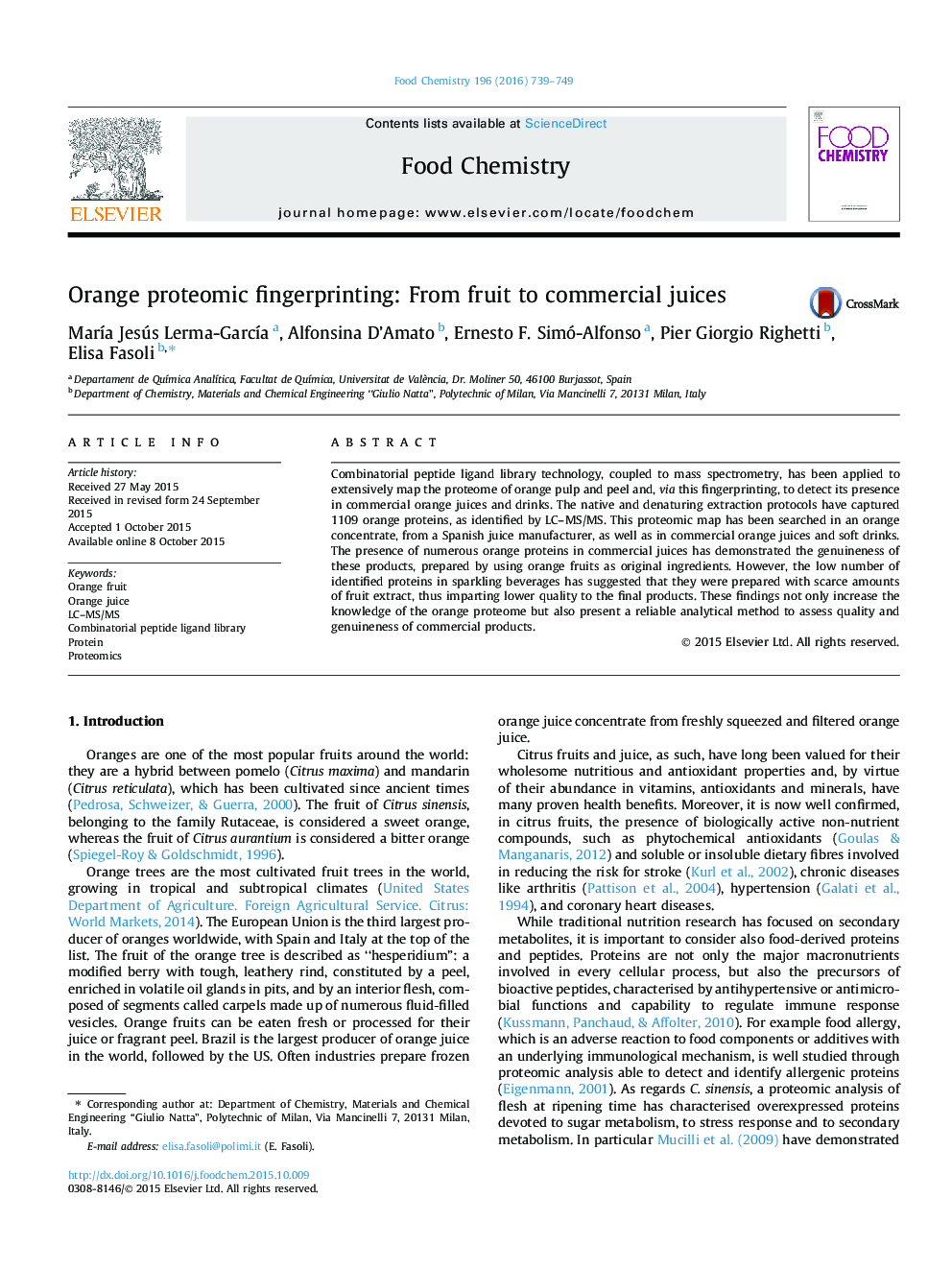| Article ID | Journal | Published Year | Pages | File Type |
|---|---|---|---|---|
| 1184199 | Food Chemistry | 2016 | 11 Pages |
•Fingerprinting of orange pulp and peel proteome using CPLLs and nLC–MS/MS.•Detection of orange proteome in commercial orange juices and drinks.•Presence of orange proteins in commercial juices to test product genuineness.•Effect of industrial processing on proteomic profile of commercial juices.
Combinatorial peptide ligand library technology, coupled to mass spectrometry, has been applied to extensively map the proteome of orange pulp and peel and, via this fingerprinting, to detect its presence in commercial orange juices and drinks. The native and denaturing extraction protocols have captured 1109 orange proteins, as identified by LC–MS/MS. This proteomic map has been searched in an orange concentrate, from a Spanish juice manufacturer, as well as in commercial orange juices and soft drinks. The presence of numerous orange proteins in commercial juices has demonstrated the genuineness of these products, prepared by using orange fruits as original ingredients. However, the low number of identified proteins in sparkling beverages has suggested that they were prepared with scarce amounts of fruit extract, thus imparting lower quality to the final products. These findings not only increase the knowledge of the orange proteome but also present a reliable analytical method to assess quality and genuineness of commercial products.
